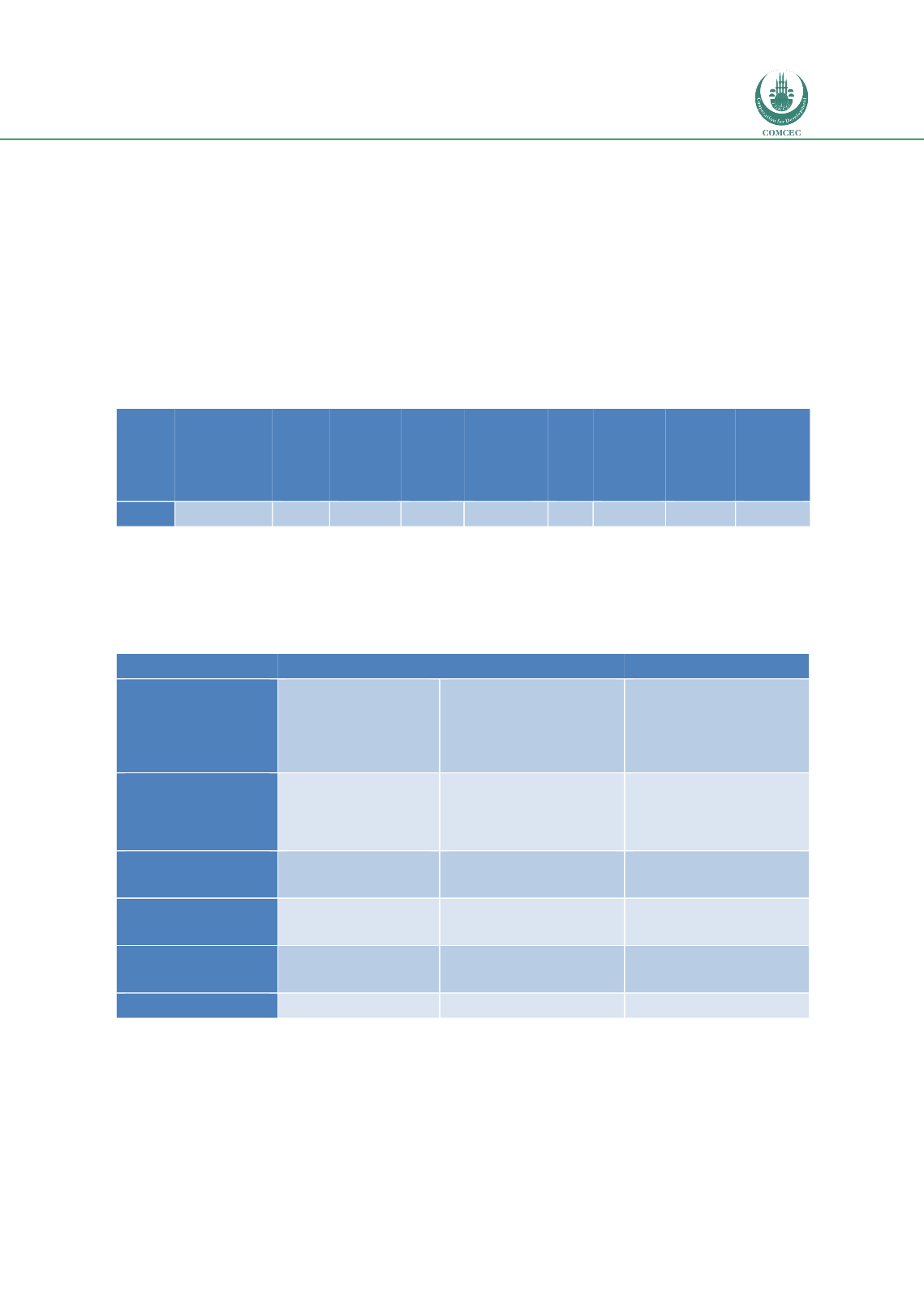

Reducing Postharvest Losses
In the OIC Member Countries
75
Lack of knowledge for example to harvest at appropriate level of maturity, and lack of training
are major constraints in OIC Member Countries with fruits and vegetables. In additional the
lack of financial resources to buy equipment for appropriate transport and storage are main
hindrances. In Nigeria the inconsistent electricity supply was cited as a main constraint to
process good quality tomato paste and puree.
3.7.
Meat and Meat Products
Two respondents selected ‘meat’ as a commodity and answered questions related to loss
estimates. Beef was the only meat product reported. By-products were feet, skin and leather.
The percentage of final product lost by weight in the postharvest value chain for Meat and
Meat products is presented i
n Table.Table 37: Weight postharvest losses in meat and meat products
Weight
loss (%)
Selling on
farm
Transpor
t to
market
Butcher/
Abattoir
Store at
processin
g point
Processin
g
Store at
selling
point
Marketin
g/retailin
g
Utilisatio
n/Consu
mption
Beef
20
0
12
2
-
1
2
3
-
Estimate of PHLs was accounted only for one respondent. Global losses were 20% and
transport to the market was the major step where losses occur. Causes of those PHLs were
described for beef meat; ways to mitigate those losses were proposed, constraints to reducing
PHLs were expressed i
n Table.Table 38: Causes, mitigation of PHLs, and constraints to reducing them (beef)
Postharvest step
Causes
Mitigation
Constraints
Transport to market
Weight/quality loss due
to trekking:
lack of feed and
watering facilities en-
route when transported
by truck
i) provision for feeding and
watering en route ii)
slaughtering in production
zone and transporting to
market (raises cold chain
issues though)
Un-customised cattle
transport trucks, long
distance between main
production and marketing
zones
Butcher/Abattoir
poor hygiene in the
abattoir resulting in
faecal contamination of
meat some of which is
discarded
upgrade slaughter slabs -
provide water and ensure
slab is good concrete quality
Low investment in
infrastructure
Store at processing
point
Quality deterioration
"showcase" meat under fly
screen; refrigeration but faces
power cut problems
Lack of electricity or
frequent cuts in supply
Processing
Quality deterioration.
E,g. burning to remove
hair could be excessive
-
-
Store at selling point
Quality deterioration.
E.g. deterioration of
unsold parts
-
-
Marketing/retailing
Quality deterioration
-
-
High losses reported during the transport to the market were attributed to a lack of feed for
the animals and poor transportation conditions (animals dehydrated and losing weight). It was
proposed to provide watering and feeding. A suggestion was to conduct slaughtering in
production zone and transport the meat however this option would require cold-chain
transportation and additional costs. Constraints were the long distances between productions,
slaughtering and marketing zones that reduced the quality and increased PHLs.
















